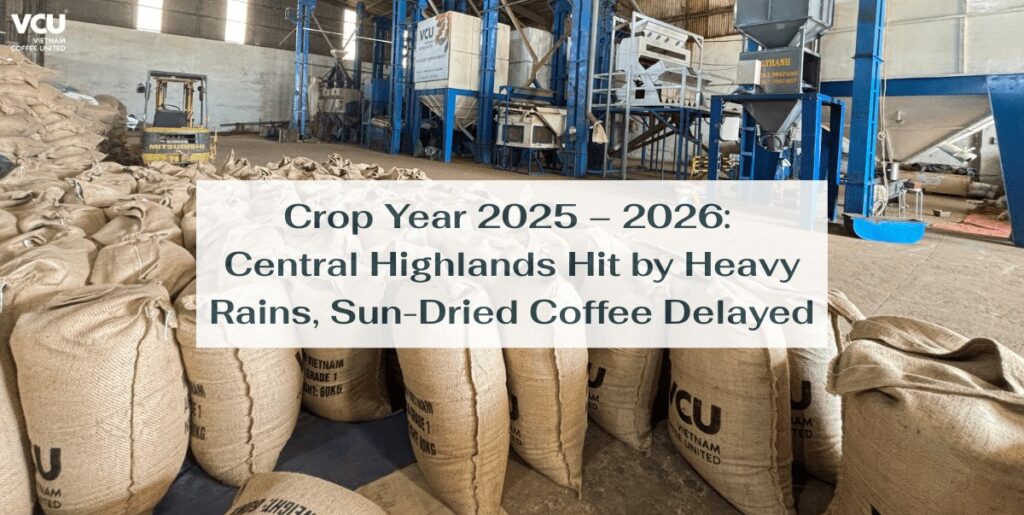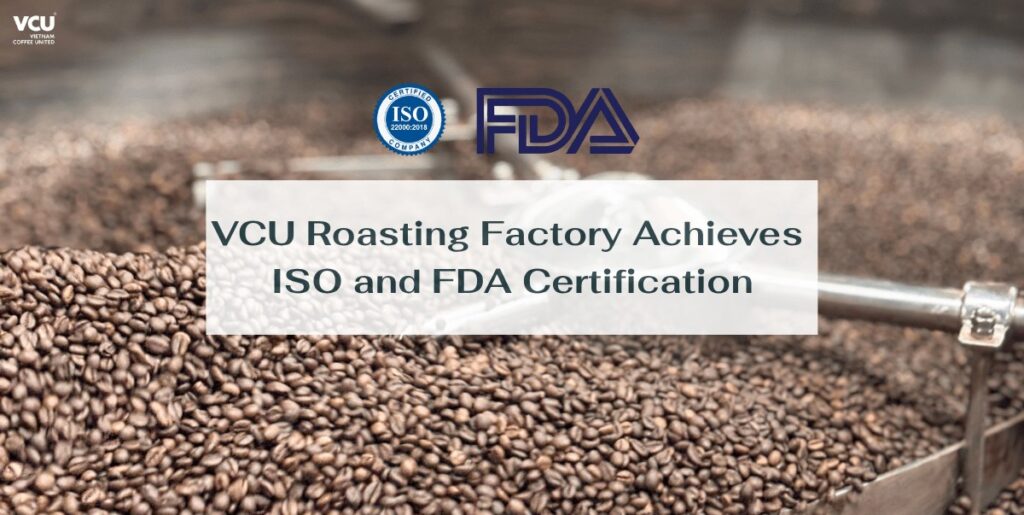What is Arabica Coffee? Classification of Arabica Coffee
What is Arabica Coffee?
Arabica, also known as coffea arabica, has a complex flavor, characterized by the distinctive aroma of flowers and fruits, with mild bitterness and bright acidity. This type of coffee is highly favored in the West.
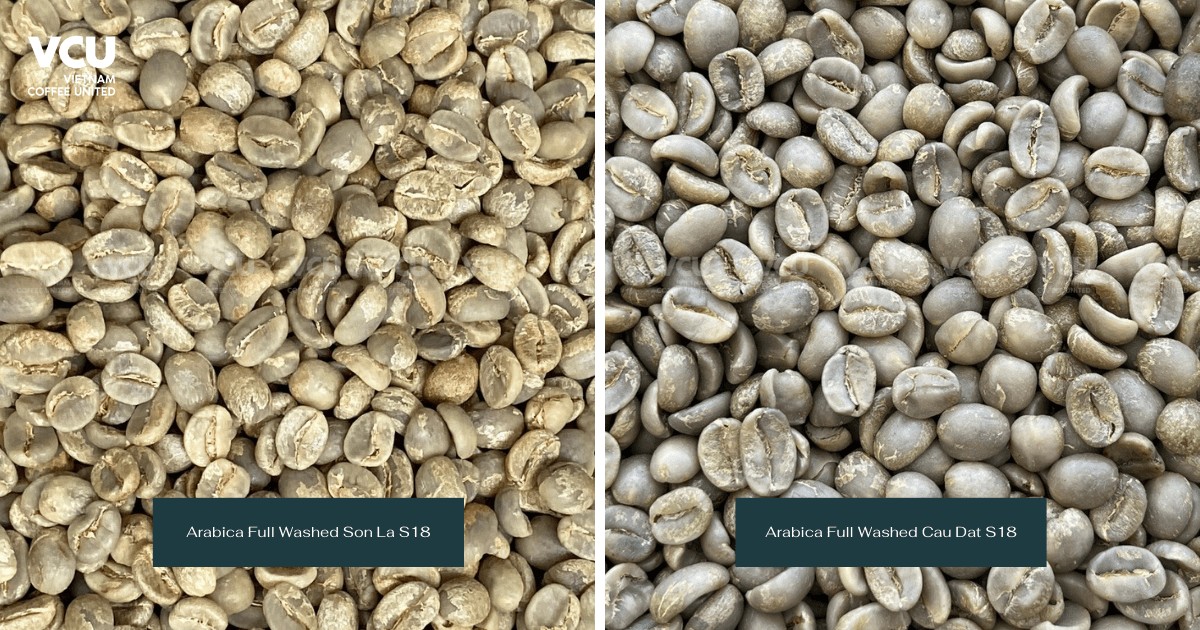
Origin of Arabica Coffee
Arabica coffee originates from the Ethiopian highlands (East Africa). It was first discovered in the 9th century. A goat herder named Kaldi noticed that his goats became energetic and couldn’t sleep at night after eating berries from a certain tree. Kaldi then tried it himself and felt alert and full of energy. However, this is just a story, and the actual origin might be more complex and not precisely determinable.
After being discovered in Ethiopia, Arabica coffee gradually spread to nearby areas such as Yemen and the Arabian Peninsula. In the 17th century, Arabica coffee spread beyond Arabia, particularly to Turkey and Europe, where it became a popular drink and an integral part of tea and coffee culture in many countries.
Characteristics of Arabica Coffee
Today, Arabica is grown in many areas worldwide, mainly in tropical countries with high altitudes such as Brazil, Colombia, Costa Rica, and Guatemala. In Vietnam, Arabica is also grown, but its production accounts for only about 20%.
Arabica coffee plants have an average height of 2.5 – 4.5m, with small oval-shaped leaves that are darker on top and lighter underneath. Arabica is grown at altitudes of 1200 – 2200m, in mild climates ranging from 15 – 24°C. Extremely high or low temperatures negatively impact its growth. When temperatures exceed 30°C, coffee plants struggle to bloom, set fruit, and produce optimal flavors.
Arabica beans are oval-shaped with an S-shaped groove or wavy line in the middle. In terms of color, when roasted at the same temperature, Arabica beans have a lighter color compared to Robusta beans. The characteristic taste helps to easily distinguish between Robusta and Arabica.
Regarding flavor, Arabica has a gentle and refined taste with natural fruity and floral notes. This is because coffee is grown in regions with unique climatic and soil conditions, resulting in rich and diverse flavors, with mild acidity and a smooth mouthfeel. The caffeine content in Arabica is only about 1 – 1.5%, giving it a milder taste, suitable for women and Western countries.
Popular Types of Arabica Coffee in Vietnam
Vietnam is not a country with ideal conditions for growing Arabica, but there are still four types of Arabica coffee grown here. Let’s explore them!
Bourbon
Bourbon has a complex and refined flavor, with a tendency towards sweetness and bright acidity. When drinking Bourbon coffee, you will experience a balanced flavor with a deliciously lingering acidity, very elegant and sophisticated. Bourbon coffee berries are round, and red, yellow, or sometimes orange. The leaves grow in a cone shape, tilted at 60 degrees to the main stem. The downside of this variety is its susceptibility to pests and diseases and its poor resistance.
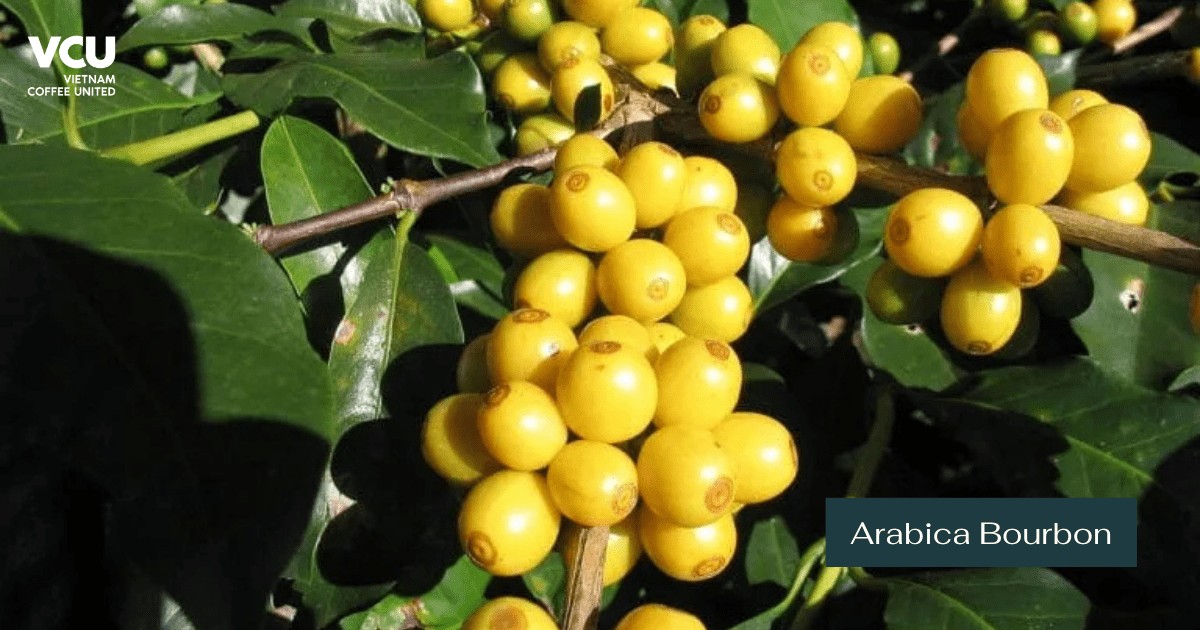
Typica
Typica contains a lot of malic acid, creating an apple-like acidity, combined with natural sweetness and mild bitterness, resulting in a balanced flavor. Enjoying Typica, you will feel the overall harmony with an alluring and enchanting aroma. Compared to Bourbon, Typica coffee berries are longer and more eye-catching. However, it has low yields, complex care techniques, and poor pest resistance, making this variety very rare and expensive in the market.
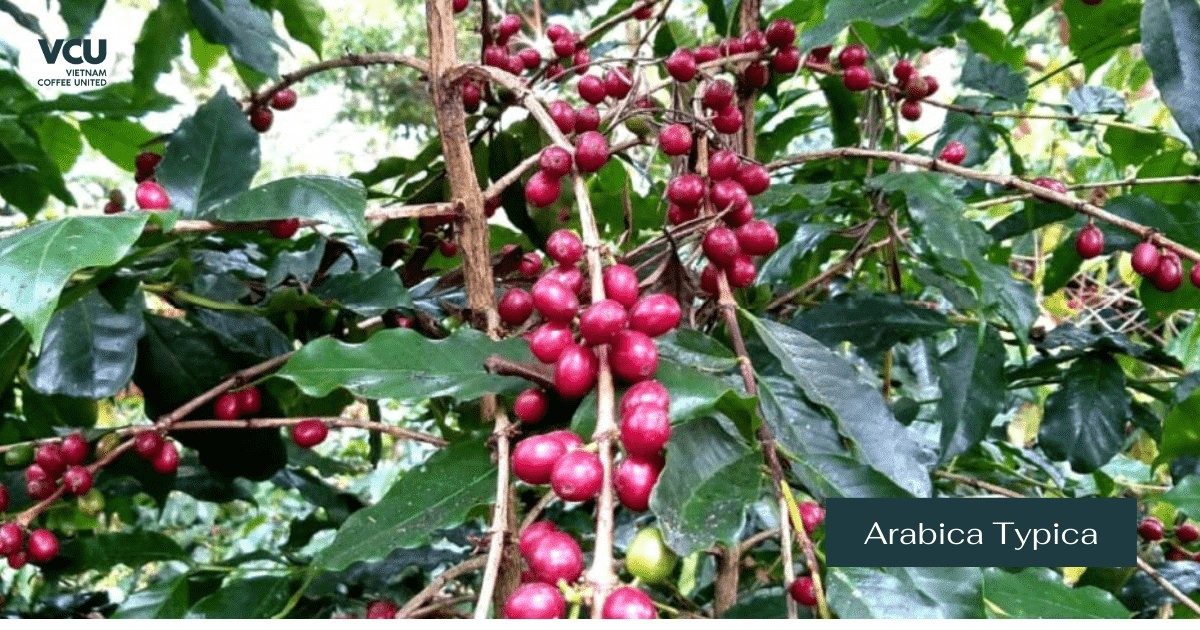
Moca (Moka)
Moca, or Moka, is a dwarf mutation of Bourbon. It is described as a powerful but irresistibly charming queen. Moka can be grown in few places in Vietnam, mainly in the Cau Dat region (Lam Dong). It has a bright acidity like fruit juice, combined with gentle bitterness and a sweet, creamy aftertaste. The Cau Dat Moka coffee is aromatic and elegant, with a distinctive flavor that coffee enthusiasts highly appreciate.
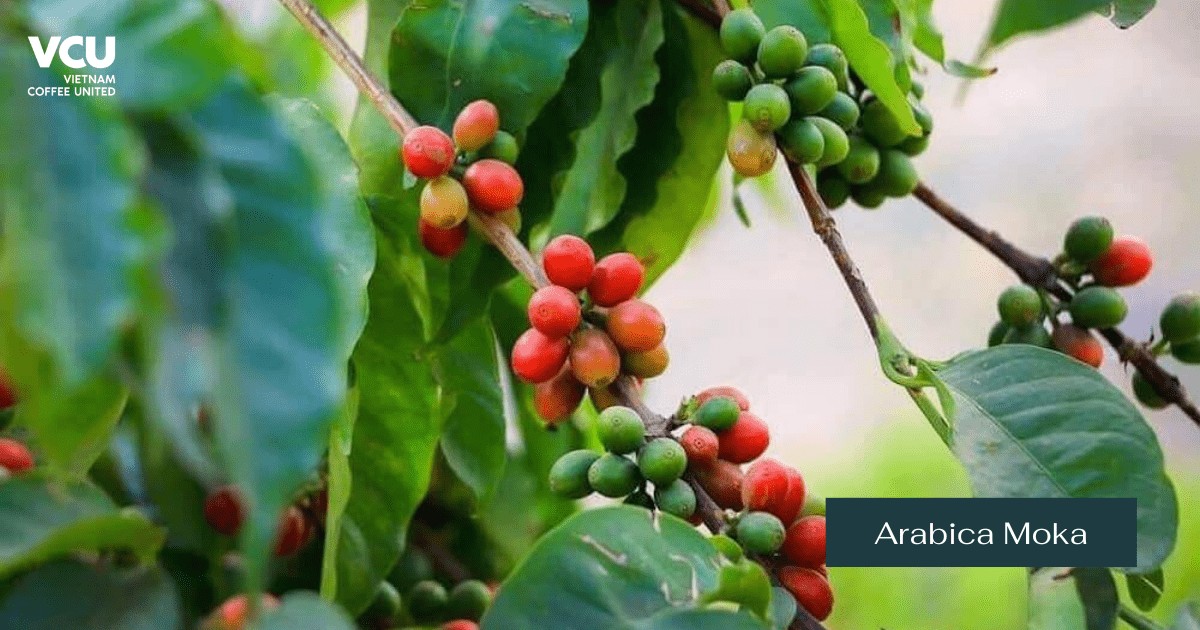
Catimor
This is a new variety in Vietnam, widely grown in the Cau Dat area. Catimor coffee beans are green, and after roasting, they have a reddish-brown color and a strong aroma. Unlike its Arabica siblings, Catimor has strong growth vigor and good pest resistance. Catimor’s flavor is a perfect balance between bright acidity, sweetness, and mild bitterness.
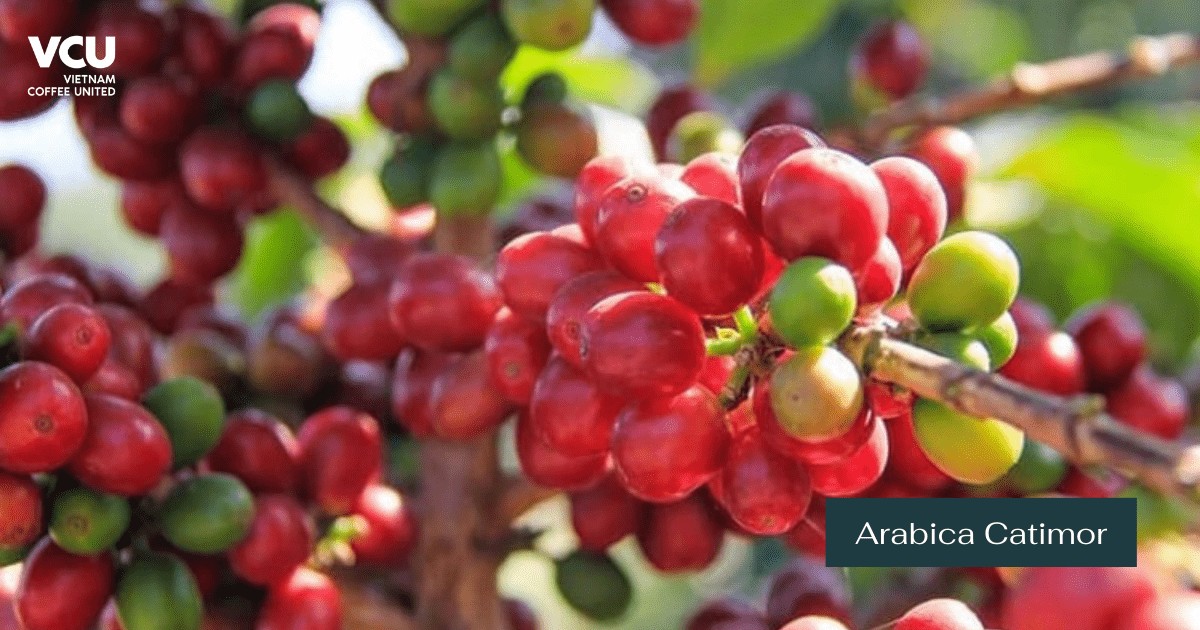
Differences between Robusta and Arabica
Geographical Location
Arabica is grown at higher altitudes than Robusta. Arabica coffee requires cool climatic conditions and nutrient-rich soil. Meanwhile, Robusta is grown at altitudes of 600 – 1000m above sea level and can thrive in harsher climatic conditions than Arabica.
Flavor
Arabica stands out with its delicate, gentle, and rich flavor, combining fruity and floral notes with a slight acidity. It is often rated as higher quality and preferred in specialty coffee lines. Robusta has a bold, robust flavor with a distinct bitterness. Robusta coffee tends to provide a strong sensation, with less acidity and a sweeter aftertaste.
Caffeine Content
While Arabica contains 1 – 1.5% caffeine, Robusta has 2 – 2.5%, double that of Arabica. The difference in caffeine content makes it easy to distinguish the bitterness when drinking.
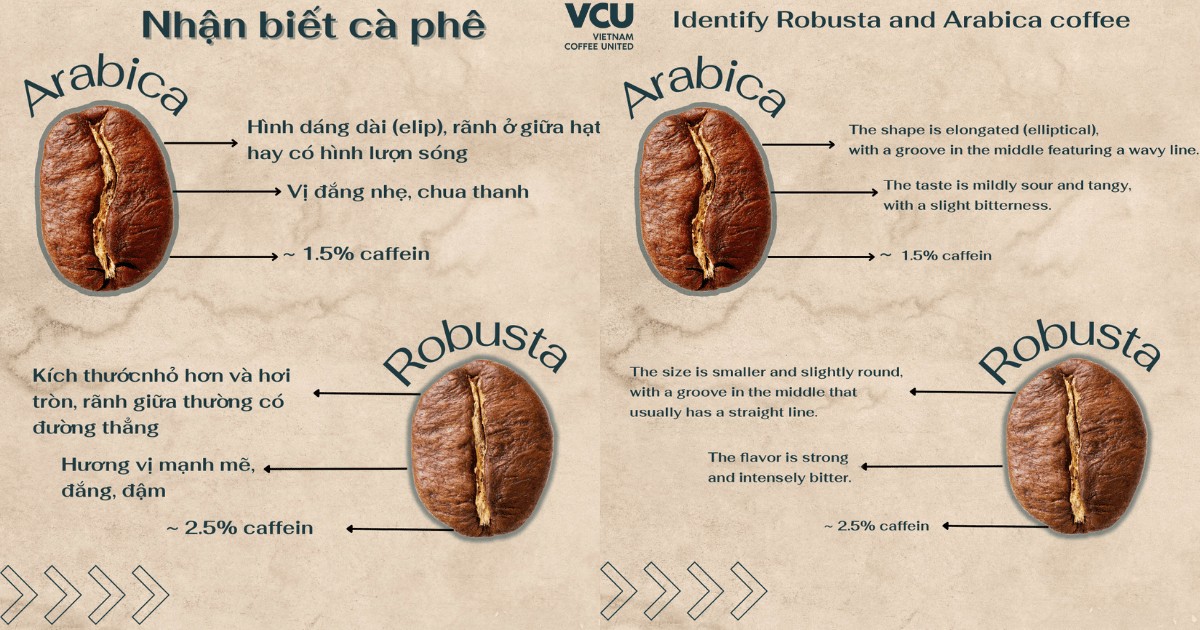
Bean Appearance
Arabica beans are larger, with a smooth and shiny surface. In contrast, Robusta beans are smaller, rounder, with a rough and slightly textured surface, and a straight groove in the middle.
Economic Value
Arabica has higher quality and richer flavor, often priced higher than Robusta and used in high-end, specialty coffee. Robusta is cheaper due to its larger yield and ease of cultivation, with less investment in care processes, thus having a lower economic value than Arabica.
Utilizing the advantages and disadvantages of each type of coffee helps people combine them and brew in different ways to create flavors that suit individual preferences.
VCU currently offers a variety of Arabica coffee products, such as:
For consultation and pricing, please contact VCU!
Contact Information
VCU Joint Stock Company (VCU JSC)
Address:
– Roasting Facility: Residential Group 6, Chu Prong Town, Chu Prong District, Gia Lai Province
– Green Bean Facility: Ia Der Commune, Ia Grai District, Gia Lai Province
– Hotline: +84 941 203 879
– Fanpage: VCU – Vietnam Coffee United
– Email: info@vietnamcoffeeunited.com

